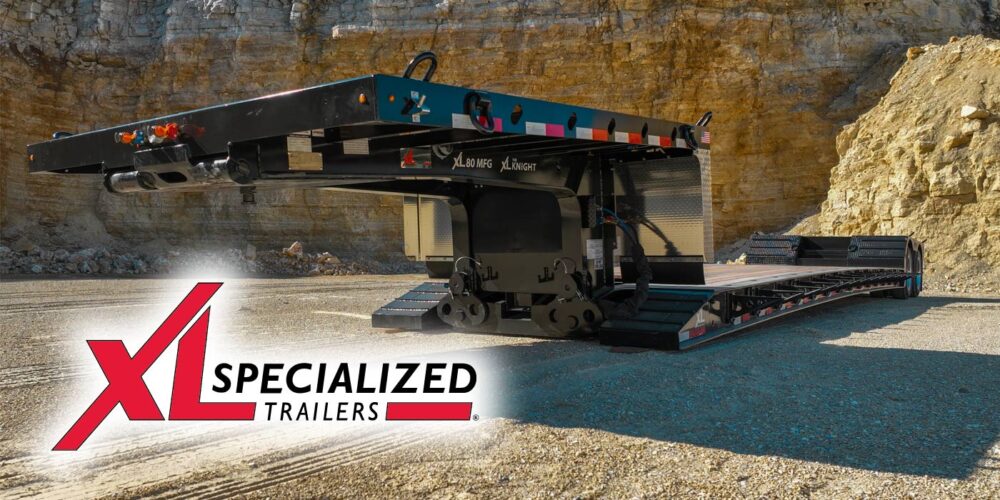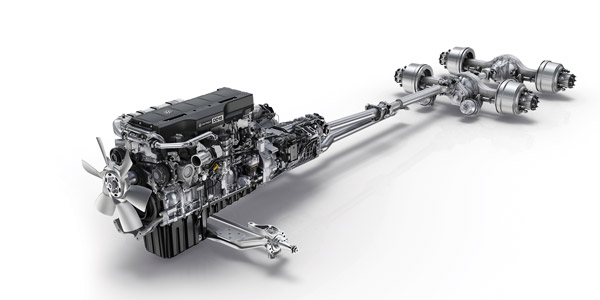
Heavy-haul. Just the name itself gets across the kind of power that is needed for trucks in these applications. Crunching over huge fallen tree trunks in a logging application in northern territories; rolling down the highway taking up just a bit more space than the lane allows, accompanied by flashing lights and a banner boasting of the oversized load being carried. These are demanding jobs with demanding requirements.
Yet trucks in these applications need to be versatile as well, because the truck won’t spend all of its time on the jobsite. Oftentimes it will be out on the road, where power takes a backseat to fuel efficiency. It’s a tightrope—one that you, the fleet manager spec’ing the truck, need to walk deftly.
As automated manual transmissions (AMTs) have eaten up market share in on-highway applications, AMTs and full automatics have also evolved to tackle the world’s most demanding applications that used to require a manual transmission and decades of driver experience. As a result, there are plenty of automated and automatic options for heavy-haul.
So before you choose your heavy-haul transmission, what do you need to keep in mind? Let’s go through a few of the major points.
Fuel efficiency vs. power: What’s your priority?
“The first thing a fleet needs to think about is the ratio of time that they’re on the highway and off-highway,” recommends Ashley Murickan, product marketing manager with Volvo.
Fleets that will be on the highway 95% of the time and off-highway just 5% of the time will likely prioritize fuel efficiency. But in heavy-haul, you can’t forget about the power you need, even if fuel efficiency is a focus. “You don’t want to spec a really low-horsepower engine because you won’t get the power or torque that you demand to get the heavy load moving,” Murickan says. With that in mind, an appropriate horsepower engine is of major importance.
As for the transmission that will be paired with that appropriate-horsepower engine, Murickan says that transmissions such as the 14-speed Volvo I-Shift with crawler gears can support the joint need for both performance and fuel efficiency. “The I-Shift gives you deep reduction to get heavy loads started to build momentum, and because you have such a deep reduction being offered with the transmission, you’re able to spec a faster rear axle ratio. When you go at highway speeds, you’re getting the fuel efficiency then. So you’re covering both startability with the crawler gear transmission and covering fuel efficiency at highway speeds, with the faster rear axle ratios.”
Charles Ganske, product management leader for Eaton Cummins Automated Transmission Technologies, names the vehicle weight, application and performance goals as the primary considerations for heavy-haul.
“A high overall ratio helps provide a balance between good startability to launch the vehicle at heavy weights and on grades, and the ability to have a moderate engine cruise speed which improves fuel economy,” he says. “Small ratio steps between gears provide high performance and allow the engine to operate at peak power for best performance in acceleration and on grades.”
Ganske notes that the Eaton UltraShift Plus MXP 18 speed is the company’s primary heavy-haul transmission. It is rated to unlimited GCW capacity, has a high overall ratio, and small ratio steps, he says, while being versatile for lower weights as well.
Allison Transmission offers a variety of fully automatic transmissions—anything from the 3000 through 9000 series can be chosen for heavy-haul, depending on the fleet’s needs and preferences. “Allison automatics have full power shifting capability, which maintains momentum and helps improve the acceleration of the vehicle,” notes Kevin Kluemper, managing director of N.A. customer integration engineering with Allison Transmission.
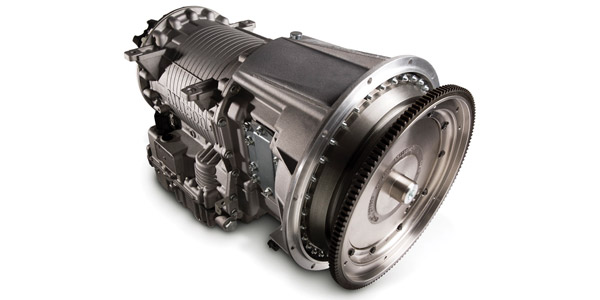
Startability and gradeability
Startability, as Ganske mentioned, is the vehicle’s ability to launch the vehicle on a grade, while gradeability is the maximum grade percentage in which there will still be sufficient traction to move the truck forward. These factors, as mentioned in the previous section, have to be balanced with the need for fuel efficiency—which is why it is important to answer that fuel efficiency question first.
“The transmission needs to have a good overall ratio range with a low gear for low speed operation and startability as well as high top gear for highway speeds,” says Brian Daniels, manager of Detroit powertrain and component product marketing. Detroit offers the DT12 automated manual transmission as its heavy-haul option.
“Allison automatics can use the full torque from the engine and multiply it with the torque ratio of the torque converter and the deep first gear ratio, thus allowing for smooth starts on steep grades,” says Kluemper. “The transmission also automatically selects the most appropriate gear based on the incline and the driver’s desired speed.”
“Knowing what kind of terrains you’ll be traveling on is very important as well,” says Volvo’s Murickan. “Are you on steep grades or are you on soft surfaces? Do you need that increased startability? All these things play a big role because the transmission and the rear axle are torque multipliers, so your choice of each depends on what kind of startability you’d like to have.”
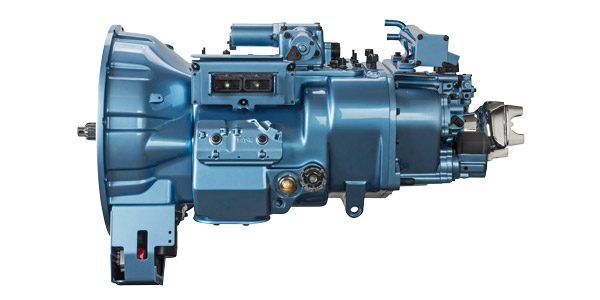
Low-speed maneuverability
Many vocational and heavy-haul trucks find themselves in situations where slow, deliberate movement is paramount—for example, when connecting a trailer or when loading or unloading at a precise spot.
This is vital for heavy-haul. “Fleet managers should ensure that features like creep mode are enabled to assist with low speed operation and maximize clutch life,” Detroit’s Daniels says.
Ganske notes that Eaton’s UltraShift Plus MXP 18 speed transmission comes standard with Hill Start Aid, Creep Mode and Urge to Move. Creep Mode allows controlled low-speed parking lot and loading dock driving without applying the accelerator. Forward and reverse creep speeds are independently adjustable to allow a customized lower speed in reverse. Urge to Move allows the truck to automatically drive forward when the truck is in gear, but the driver’s foot is not on the gas or the brake. Hill Start Aid can be activated if the vehicle is on a grade of 1% of greater, and stops the truck with the foundation brakes, then begins to move after three seconds. It can be turned on and off by the driver.
Volvo’s I-Shift series offers one crawler gear on its 13-speed I-Shift and two on the 14-speed I-Shift, which includes an “ultra-low” crawler gear. The ultra-low gear enables controlled forward and reverse travel at extremely slow speeds, down to 0.6 MPH with a 3.58 rear axle ratio.
More options for customization
Transmission manufacturers offer plenty of other areas for customization, which can be adjusted depending on needs.
“There are options within each Allison transmission series where you can customize on the customer’s needs, such as hydraulic retarders, PTO options, engine brake integration and shift schedule optimization, to name a few,” Allison’s Kluemper says. “Each of these customizations can provide precisely the performance features needed to get the job done confidently.”
According to Detroit’s Daniels, other potential options for fleets to consider include:
- Power take off (PTO) provisions with clear access for the PTOs;
- Shift control parameters based on the application type; and
- Driver control options, such as a manual mode.
Over-the-air help
Over-the-air updates have become commonly offered in today’s engines, and transmissions can benefit from the technology as well. It’s not heavy-haul specific, but it’s helpful to any fleet that wants to avoid downtime—so, every single fleet.
“Many parameters of the I-Shift transmission can be changed over the air—automatic starting gear, paver assist mode and auto neutral, for example,” notes Volvo’s Murickan. “So let’s say a fleet wants to change the shift strategy on their I-Shift; the driver can do it by parking his truck in a truck stop and going to have his lunch for half an hour. When he comes back, the update is already done.”
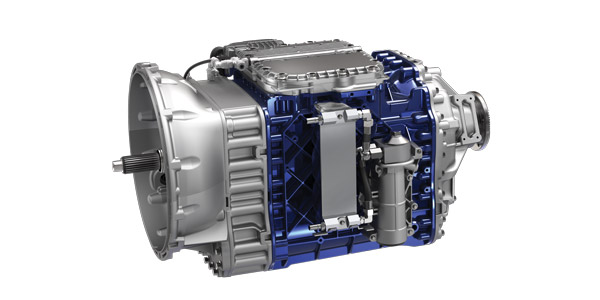
The benefits of integration
Of course, the transmission works closely with the engine and axle to form the powertrain and power the truck’s performance, so it’s essential that these components are spec’d as a group and will complement each other to do what you need them to do. That doesn’t necessarily mean spec’ing a fully integrated powertrain all offered by one company—though many fleets do take advantage of this option—but just that in general, it’s important to understand that you’re not spec’ing individual components as much as you’re forming a unit that will work in concert.
“You can’t just spec the transmission and expect everything to be okay,” says Volvo’s Murickan. “You have to take care of the whole powertrain—engine, transmission, rear axle ratio, tire size, all of that.
“The vehicle speed is very important as well,” he adds. “What is the truck’s top speed? What is the average operating speed? Based on that speed you can figure it out what kind of transmission, rear axle ratio and tire size you want to spec.”
“Be clear and specific with your intended application to be sure that the vehicle spec’d and ordered will match your intended application,” advises Detroit’s Daniels. “Do not under-spec a truck–instead, make sure to spec the truck with its intended GCW and application to ensure proper performance and product reliability (specifically transmission, driveline, axles, axle ratio and suspension).”
Know that you can work with your chosen transmission provider to find the best option.
“Allison Transmission has established standard specifications required for the applications that allow us to determine the correct transmission configuration to meet the needs of our heavy-haul customers,” Kluemper says.
“Manual transmissions, automated manual transmissions and automatic transmissions can all be considered for heavy-haul, and the selection of which transmission is based on customer preference and type of application,” Daniels says. “Every customer has unique needs, so we work closely with them to evaluate what’s best for their specific business or application.”





